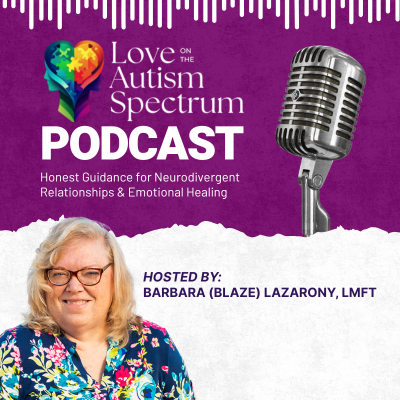When we think of emotion, most of us picture smiles, tears, or an angry outburst—visible cues that fit neatly into neurotypical expectations. But for autistic children, emotions often live beneath the surface, deep and powerful, yet rarely expressed in ways the world expects. It’s no wonder that one of the most persistent myths about autism is that autistic people don’t feel emotions—or don’t feel them the “right” way.
Clinical psychology plays a crucial role in understanding and supporting the emotional experiences of autistic individuals.
The truth? Autistic individuals experience the full human emotional spectrum—joy, grief, fear, excitement, empathy, and love. However, how those emotional responses are recognized, processed, and expressed may look different, feel different, and require a deeper kind of listening. This blog unpacks that difference—gently, honestly, and with compassion.
Let’s unravel the assumptions and explore what autism and emotion look like, because once we understand this emotional diversity, we can stop asking, “Do they feel?” and start asking, “How can I better understand how they do?”
Key Takeaways
- Autistic individuals experience the full range of human emotions but may express and process them differently than neurotypical individuals.
- Emotional expression may come through body language, vocal tone, or sensory responses rather than facial expressions or typical social cues.
- Recognizing and regulating emotions can be difficult due to challenges with interoception, alexithymia, and sensory sensitivities.
- With personalized support strategies for managing emotions, autistic individuals can thrive emotionally and experience deep empathy and connection.
Emotions Are There—Even If You Can’t See Them
Let’s start by naming a common myth: that autistic individuals lack emotions or empathy. This simply isn’t true. What is true is that the way emotion understanding is felt, interpreted, and expressed in autism often doesn’t match societal expectations. And when the external signals don’t “look right,” people may assume the feelings don’t exist.
Children with high-functioning autism spectrum disorder (ASD) often face challenges in describing emotions. They struggle with differentiating their emotional responses and frequently rely on overt cues to articulate their feelings, indicating a general lack of emotional insight and understanding.
But emotion in autism is often internalized. It might not show up as a loud laugh at a joke or tears at a movie. Instead, it might surface as a tightly clutched object, a sudden movement, or a quiet withdrawal. These are not voids. They’re signals. And when we miss or misread them, we reinforce harmful stereotypes that create emotional isolation.
Introduction to Autism Spectrum Disorder
Autism Spectrum Disorder (ASD) is a complex neurodevelopmental condition that affects communication, social interaction, and behavior. For many autistic children and adults, understanding and managing their own emotions, as well as recognizing the emotions of others, can be particularly challenging. Emotional development is a critical aspect of overall well-being, and individuals with autism spectrum disorders often need tailored support to navigate their emotional landscape.
Research has shown that emotion dysregulation is a common feature of autism spectrum disorder. This means that autistic individuals may struggle with managing both negative emotions, such as anger and anxiety, and positive emotions, like excitement and joy. These difficulties can impact their ability to respond appropriately in social situations and can lead to heightened sensitivity to sensory stimuli.
Understanding and supporting the emotional responses of autistic individuals is essential. By recognizing the unique ways in which they experience and express emotions, we can provide better support and foster a more inclusive environment. This involves not only helping them manage their emotions but also educating others to understand and respect these differences.
Beyond the Face: How Autistic People Express Emotion
Expression Without the Expected Cues
Autistic individuals may not use facial expressions or eye contact in expected ways. Instead, emotional expression may emerge through:
- Changes in posture or movement (rocking, pacing, stillness)
- Shifts in vocal tone, pitch, or volume
- Proximity or body orientation
- Repetitive behaviors that signal emotional states
- Physical sensations that reflect emotional experiences
Imagine an adult who turns away during a difficult conversation. To some, that may seem like disinterest—but for that individual, it may be a regulatory strategy. Or the child who hums when overwhelmed—that’s an example of emotion regulation, emotional self-soothing, not distraction.
Misinterpretations Have Consequences
When emotions don’t follow the “script,” people often jump to conclusions: They’re cold. They’re uncaring. They’re being difficult.
These assumptions hurt. They not only lead to judgment but also create a profound disconnection. In truth, the autistic person might be overwhelmed, deeply affected, or working hard to hold it together. Autistic individuals often have difficulty recognising emotions in themselves and others, particularly in challenging situations. Social misunderstandings are frequently driven by misinterpretations, not a lack of emotional presence.
The Challenge of Recognizing Emotions—Inside and Out
Interoception: The Inner Compass
One of the most common emotional challenges in autism is interoception—our sense of the internal state of the body. Many autistic individuals struggle to notice or interpret sensations like hunger, tension, or heat as emotional signals. This can delay emotional recognition until the negative feelings become intense, like realizing you’re anxious only when you’re already in a panic.
A therapy client once shared: “I thought I was getting sick, but it turns out I was just really sad. I didn’t know sadness felt like that.”
Alexithymia: When Emotions Don’t Have Words
About half of autistic people experience alexithymia, which means difficulty identifying and naming emotions. It’s not that the feelings aren’t there—it’s that they don’t have a precise shape or label. This can make it hard to express complex emotions, ask for support, or even know what’s happening inside.
Processing emotions can be particularly challenging for those with alexithymia, as trauma can hinder this process and lead to emotional suppression.
Visual tools like emotion wheels, thermometers, or sensory ladders help build the bridge between body signals and positive emotions and emotional language.
Learning to Read Emotional Cues
Understanding others’ emotions is another area where autistic individuals may need support. Reading subtle cues—like sarcasm, passive-aggression, or emotional layering—can remain difficult even if emotional vocabulary is learned. Especially in times of stress, previously learned skills may disappear in the moment.
Recognizing other people’s emotions is crucial for emotional development, as it helps autistic children and teenagers interpret external emotional cues, which can impact their social interactions and relationships.
That’s where role-play, social stories, and explicit discussions can help. Emotional understanding doesn’t come from guessing games—it comes from guided discovery.
Empathy in Autism: Emotional vs. Cognitive
Autistic individuals often experience what’s called “empathic disequilibrium”—a mismatch between emotional empathy (feeling others’ feelings) and cognitive empathy (understanding what others feel and why). Many feel deeply but may not know how to respond. Others might react logically when warmth is needed.
Understanding both one’s own and other people’s emotions is crucial in supporting autistic children and teenagers. Recognizing and managing emotions can enhance relationships and improve overall mental health and well-being.
This imbalance is not a deficit—it’s a different configuration. For example, many autistic women and femmes experience high emotional empathy, which can lead to overwhelm or burnout from caring too deeply and too often without adequate support.
Emotional Regulation: Why It’s So Hard
Autistic people are four times more likely to experience emotional dysregulation than their neurotypical peers. This isn’t about being “too sensitive”—it’s about a nervous system that is often working at full capacity just to process the world and maintain mental health. Stressful situations can further exacerbate emotional dysregulation, making it crucial to understand how these scenarios impact emotional regulation.
Common triggers for dysregulation include:
- Sensory overload (sounds, lights, textures)
- Social misunderstandings
- Transitions or unpredictability
- Internal states like hunger or illness
- Emotional overwhelm from empathy or anxiety
Self-regulation strategies may include:
- Deep pressure or weighted blankets
- Fidget tools or calming objects
- Retreating to a quiet, dark space
- Movement (like pacing or swinging)
- Breathwork or guided mindfulness
Building Self-Awareness and Emotional Resilience
The key to emotional well-being is building self-awareness—recognizing what triggers strong feelings, and having strategies ready to respond.
Some helpful tools include:
- Emotion charts or feeling faces–these are my personal favorites!
- Sensory ladders to gauge intensity
- Music or rhythm-based therapy
- Personalized visual schedules or cue cards
It’s not about teaching someone to “act normal.” It’s about helping them understand their emotional blueprint so they can navigate life with more ease and self-trust. Autism and emotions are unique for each person too!
The Role of Support Systems
Therapists, educators, and caregivers play a vital role in emotional development. But support must be neurodiversity-affirming—it must meet the person where they are, not force them into a neurotypical mold.
Understanding child psychology is crucial in supporting autistic individuals, as it helps address communication and behavioral issues within the diagnostic framework of autism spectrum disorders.
As a therapist and coach who specializes in working with neurodiverse people, especially adults on the autism spectrum, I have seen firsthand the transformative power of a supportive environment. When individuals are given the tools and guidance to understand their emotional needs and communicate them effectively, they can thrive in any setting.
The Influence of Developmental Milestones
Emotional development is tied to broader areas like language, cognition, and social experience. Joint attention—shared focus between child and caregiver—is one of the first building blocks of emotional learning. When that early foundation is different, the emotional learning path shifts, too.
The unique aspects of emotional development in autistic individuals influence how they experience and regulate emotions, which can lead to specific challenges and opportunities for tailored treatments.
Therapeutic approaches like play-based interaction, music integration, and social scripting can support this learning at every age.
Teaching Kids About Emotions (Without Making It a Test)
Children on the autism spectrum benefit from experiential emotional learning—embedded in play, music, movement, and storytelling. Tools like:
- Emotion cards and puppets
- Social stories about real-life events
- Body scans or “Where in My Body?” games
- Music-based feeling identification
Providing a quiet place for children to sit and calm down from strong emotions is also crucial for emotional learning.
These aren’t just for education—they’re invitations into self-awareness.
What if You’re an Adult with Autism who Struggles with Emotions?
For many autistic adults, emotions can be a complex and overwhelming experience. Recognizing and understanding their own emotions, as well as interpreting the emotions of others, often presents significant challenges. This can lead to difficulties in social interactions, forming relationships, and maintaining mental health.
Autistic adults may experience intense emotions, such as anxiety and stress, and often have trouble identifying and describing these feelings. They might also struggle with recognizing and responding to other people’s emotions, including reading facial expressions and body language. These challenges can contribute to a sense of social isolation and misunderstanding.
However, with the right support and strategies, autistic adults can learn to manage their emotions more effectively. This might include learning about emotions through visual tools like emotion cards and wheels, developing emotional regulation skills, and practicing self-care and stress management techniques. By building these skills, autistic adults can improve their emotional development and enhance their overall quality of life.
The Complexity of Negative Emotions
Negative emotions can be especially difficult to navigate. Anger may show up as silence. Fear may look like a tantrum. Sadness may manifest as shutdown. Without words to explain, the emotional pain gets compounded.
Recognizing and expressing difficult emotions can be particularly challenging, as these complex feelings often require specific tools and strategies to manage effectively.
Proactive teaching during calm times is key. Visual routines, calming sequences, and co-regulation moments help build emotional fluency before overwhelm hits.
Witnessing Others’ Pain: Another Layer of Complexity
For autistic individuals, watching someone else in pain can be deeply affecting—and equally confusing. Some may freeze or shut down because they feel too much. Others may not show any reaction at all, but still internalize the distress. Witnessing others’ pain can lead to social withdrawal as a protective mechanism against the emotional ‘contagion’ from others’ negative feelings.
This doesn’t mean they don’t care. It means we need to slow down, create space, and avoid rushing to judgment.
Technology as a Tool for Emotional Learning
Tools like The Transporters (an animated series using mechanical characters with human faces) or emotion recognition apps can offer safe, structured ways for autistic individuals to explore emotions.
A systematic review of these tools is crucial in evaluating their effectiveness, as it allows for a comprehensive analysis of existing research and helps in drawing broader conclusions about their impact.
Used thoughtfully, these supports can open emotional doors without overwhelming the sensory input.
Therapy and Intervention
Therapy and intervention play a crucial role in supporting the emotional development and regulation of autistic individuals. Cognitive-behavioral therapy (CBT) and other forms of talk therapy can be particularly effective in helping autistic individuals understand and manage their emotions, including both negative and positive emotions. Many individuals and couples that I have the opportunity to support have reported significant improvements in their emotional regulation and overall well-being after working with a therapist like me who has an understanding of autism.
In addition to talk therapy, some individuals may benefit from sensory integration therapy. This type of therapy focuses on helping autistic individuals regulate their sensory experiences, which can be overwhelming for many on the spectrum. By using specific techniques and activities, sensory integration therapy aims to help individuals process and interpret sensory information more effectively, improving emotional regulation.
Additionally, occupational therapy and sensory integration therapy can help autistic individuals develop emotional regulation skills and manage sensory input. These therapies focus on creating strategies to cope with sensory overload and other triggers that can lead to emotional dysregulation.
It’s important to note that not all forms of therapy and intervention will work for every individual on the autism spectrum. It’s crucial for therapists and other professionals to approach each case with flexibility and an open mind, tailoring interventions to meet the unique needs of each individual.
Normalizing Emotions and Reducing Stigma
Normalizing emotions and reducing stigma is vital for supporting autistic individuals and promoting their emotional development. Autistic individuals often experience emotions differently than their typically developing peers, which can lead to misunderstandings and stigma. However, by promoting awareness and understanding of autism and emotional development, we can work to reduce stigma and foster acceptance.
Educating others about autism and the unique ways autistic individuals experience emotions is a key step in this process. Promoting positive representations of autistic individuals in media and society can also help to challenge stereotypes and encourage a more inclusive perspective.
Supporting autistic individuals in their emotional development and regulation involves creating environments where their emotional expressions are understood and respected. By working together to promote awareness and acceptance, we can create a more supportive and inclusive environment that values the emotional diversity of all individuals.
Summary: The Journey Toward Emotional Understanding
The emotional life of an autistic person is not less than—it’s just different. And when we meet autism and developmental disorders with curiosity, flexibility, and deep respect, we create room for true connection.
A recurring theme in emotional understanding and support is the consistent observation of unique emotional responses and neurological functions among autistic individuals, which highlights the importance of empathy and emotional regulation.
Supporting autistic individuals emotionally means:
- Listening with your whole self
- Valuing their unique emotional language
- Providing tools, not tests
- Honoring the emotions they express—even if they look unfamiliar
When we stop measuring emotion by facial expression and start listening to its deeper signals, we build bridges of empathy and love that span neurotypes. Start your journey with us today and discover all the tools and support you need to achieve your goals—sign up now for a FREE “Clarity and Connection” Zoom, and take the first step!
Frequently Asked Questions
What is the “double empathy problem” in autism?
It refers to the mutual difficulty both autistic and neurotypical individuals have in understanding each other’s emotional expressions and perspectives—not a one-sided problem.
How does alexithymia affect emotions in autism?
Alexithymia makes it difficult to identify, describe, or express emotions. Many autistic individuals experience it, leading to emotional confusion or delayed responses.
Can autistic individuals feel empathy?
Absolutely. Many feel empathy intensely, especially emotional empathy. Challenges may lie more in expressing it or interpreting social expectations around it.
What strategies help autistic individuals manage emotions?
Visual tools, calming routines, sensory-friendly spaces, and support from compassionate adults can help build emotional regulation and resilience.







